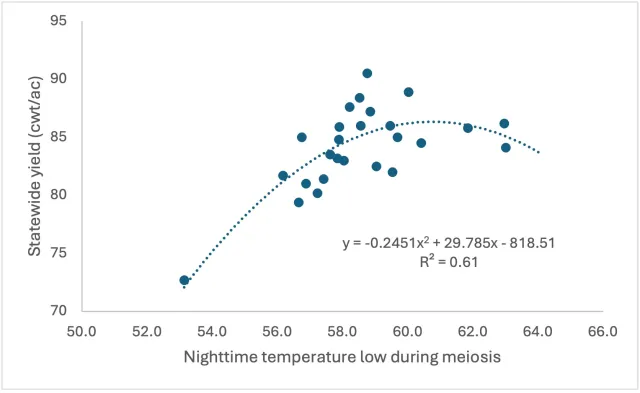Blanking potential in forecast
Blanking (floret sterility) can occur during meiosis (pollen formation) when nighttime temperatures drop below 58 oF. Blanking can cause reduced yields. The cooler it is and the more nights during this period with low temperatures have an increasingly negative effect. You can see in Figure 1, where in 1999, nighttime temperatures averaged 53 oF during this period and yields averaged 73 cwt/ac.
This sensitive stage of pollen formation occurs during booting and is roughly between 7 days after panicle initiation (PI) and 7 days before flowering. While it depends on variety, this stage will begin around 55 to 60 days after planting. This year in California, there was a significant amount of rice (about 25%) planted before May 1. For this early planted rice, pollen formation will begin in late June/early July.
I am looking at the weather forecast, and seeing some low nighttime temperatures forecast in the first week of July. These low nighttime temperatures vary around the valley and are usually lower in the southern part of the Sacramento Valley.
To help alleviate this concern, we recommend raising the flood water height in your field to at least 6 to 8 inches. The flood water will act as a blanket on the developing panicles and protect them for the low temperatures. Given the uncertainty of temperature forecasts and localized microclimates, we recommend raising the floodwater height between PI and flowering regardless – especially if you farm south of HWY 20.

Figure 1. Impact of low night time temperatures on California statewide yields. Data are from 1992 to 2023. Temperature data are an average of three CIMIS stations located in the rice growing region of Sacramento Valley. The temperature data presented represents the average low night time temperatures for a two-week period during meiosis.
